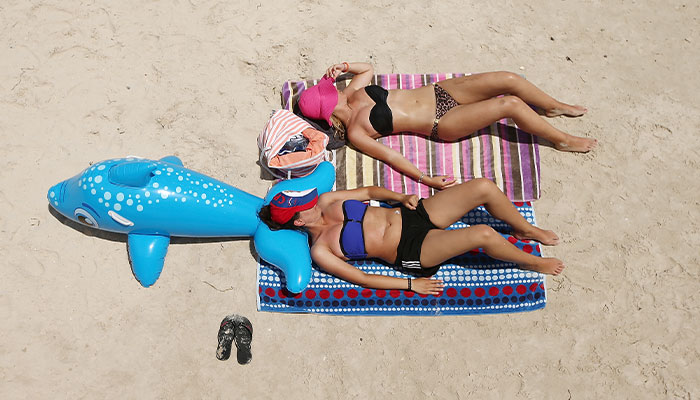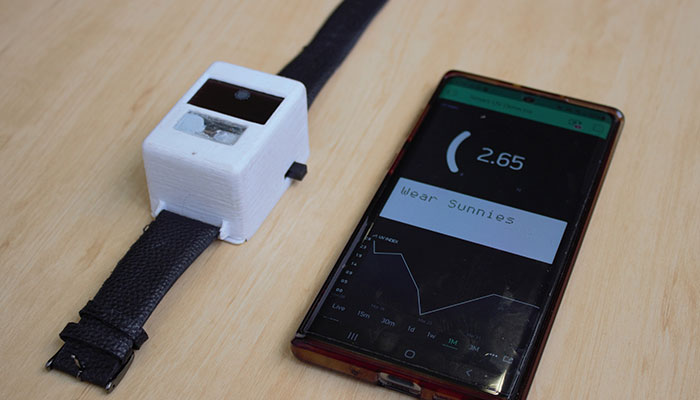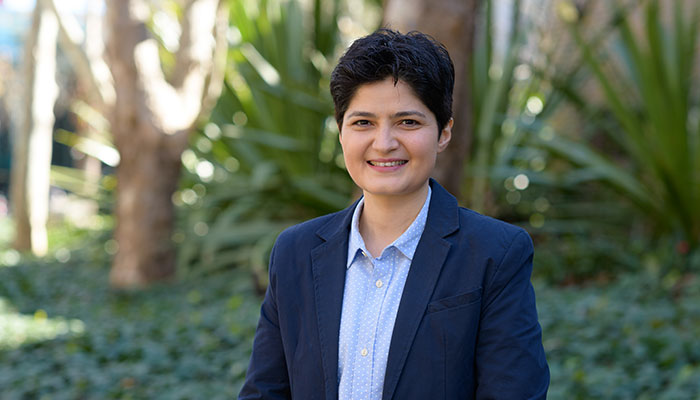A tiny nanosensor, the size of a fingernail, is the key to a new wearable device that detects harmful ultraviolet rays that can cause skin cancer. Developed by Dr Noushin Nasiri, Head of the Nanotechnology Laboratory at Macquarie’s School of Engineering, the device could help prevent thousands of deaths.
“Once I’d developed the sensor, I was very keen to bring it out of the laboratory and into the world as quickly as possible but I needed a smart device to put it into,“ says Nasiri, whose research focuses on using nanotechnology to create wearable devices for preventative health.
Working with a Masters student, Danial Bavi, an electronics expert, the pair have taken her innovation a step forward. They’ve created a watch-like prototype that houses the sensor and alerts the wearer to UV levels.
Watching the sun
The researchers have named their device 'Sunwatch' and they are in the process of patenting it and looking for an industry partner to commercialise it. Australia would be a ready market, because it has the highest incidence of skin cancer in the world.

'Go in the shade': The Sunwatch gives personalised and precise advice for a user's skin type, says its inventor Dr Noushin Nasiri.
The Sunwatch is easy to use, Nasiri says. The wearer enters their skin type, the device measures current UV rays and then suggests actions on an LCD screen that the person could take to decrease sun exposure. This advice includes 'put on sunnies' or 'wear a broad brimmed hat' or 'go in the shade'.
People with darker skin have more melanin to protect them than people with lighter skin. But people with dark skin still get skin cancer, it just takes more sun exposure. “The Sunwatch gives you personalised and precise advice for your skin type,” Nasiri says.
The UV index created by the World Health Organisation ranges from 1 to 11+, depending on the weather and cloud cover. The Cancer Council NSW advises that for at least 10 months of the year in NSW, the UV Index will be about 3 or above and a person with lighter skin needs some type of sun protection to be sun safe.

Incoming: A prototype of the Sunwatch ... it’s smart, accurate and reliable, says Dr Nasiri, and in a country such as Australia it could be a lifesaver.
Sunwatch tells you the precise protection you’ll need, Nasiri says. It also has an app that connects to your phone. It updates the UV rating every two seconds and tells you how much sun you’ve been exposed to in the past half an hour, similar to how a Fitbit tells you how many steps you’ve taken.
Nasiri and Bavi have created three iterations of the prototype, including changes to the angle of the face of the Sunwatch so that it can better calibrate UV rays.
- How athletes prepare for an Olympics without supporters
- 'Right thing to do': Gig economy firms face the music
When they find a company that wants to make Sunwatch, Nasiri says they’ll probably manufacture the device smaller and more stylish than the current prototype.
There are other apps available commercially that tell users the UV rating in their location but none of them deliver alerts that are personalised.
“What we’ve created is a proof of concept and I believe we can make a lot of improvements to make it better,” Nasiri says. “The device works. It’s smart, accurate and reliable. In a country such as Australia, with the highest rates of melanoma in the world - it could be a lifesaver.”

Dr Noushin Nasiri (pictured) was the recipient of the NSW 2019 Young Tall Poppy Science Award and is a passionate science communicator who has given several TEDX talks.



